1. Travel Ideas in India: Ladakh region in northern India
The Ladakh region is a journey in India through a place of unique terrain. Ladakh is a mountainous desert surrounded by majestic lakes and valleys. It’s a really peaceful place where people take their time, their “way of life” is Buddhism – which means that life must be moral, wise, and the person himself must be compassionate and understanding… and a luxurious life does not guarantee happiness. Travelers who choose to Travel Ideas in India region are already tired of commercial places, full of tourists and artificial lifestyle… During this trip in India, you will discover the deepest corners of the region – monasteries (Alchi, Lamayuru, Hemis, Samstanling, Deskit…) and gompas, villages and valleys such as Nubra and Zanskar. The Ladakh region is also suitable for adrenaline junkies – climb the heights of Khardungla at an altitude of 5,596m for an extreme ride on the highest drivable road in the world! Also read:
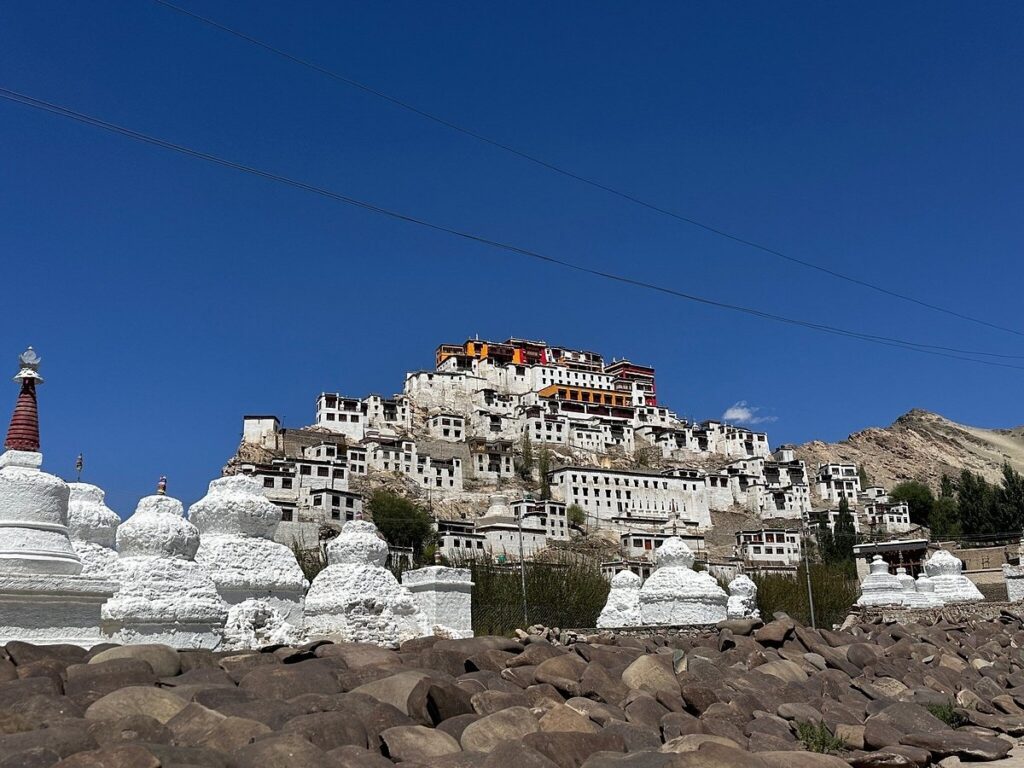

Another beauty of Ladakh is Pangong Lake. It is one of the highest lakes in the world, characterized by salty water. It is located at an altitude of 4350 m above sea level. Despite being a saltwater lake, Pangong freezes completely in winter. About 60 percent of the lake’s length is in China, and the eastern end of Pangong is in Tibet. The best time to travel to Ladakh is from mid-May to the end of September, as this is when all the roads are open and passable (the snow has melted).
2. Andaman and Nicobar Islands


The Andaman and Nicobar Islands, which recently opened their doors to foreign tourists, are picture-postcard with white-sand palm-fringed beaches and azure waters. A frequent traveler does not expect to see these types of places during a trip to India because it is not associated with the India that most imagine. You will not find chaos and noise on these islands. Here, great attention is paid to environmental protection and coral conservation.
Coral reefs in the Andamans are the least affected by coral bleaching in the world. You can find almost 197 species of corals in thirteen locations. Commercial fishing is banned, a move by the government to protect biodiversity from commercial exploitation. So you will have to taste fish and seafood from local fishermen villages or in local restaurants.
And what unique animals live here? In addition to many exotic birds and fish, the Andaman and Nicobar Islands are home to the world’s largest sea turtle, the leatherback (Dermocheleys Coriacea). It is enormous in size and thousands of them flock to the Andamans every year. These turtles can be seen from December to January at many places in North and Middle Andamans. Also, the only active volcano in the whole of South Asia is located in the Andaman and Nicobar Islands, Barren Island, located 135 km from the capital – Port Blair. You can see this live volcano during tours. The islands with the best developed infrastructure and which are open to foreign tourists are Havelok (Swaraj deep) and Neil (Shaheed Deep). While on these islands, you can easily reach other smaller islands that are surrounded by nature, but do not have hotel chains.
Not all islands are open to tourists, as some islands are inhabited by wild tribes completely cut off from the modern world. To preserve their identity, the islands are completely off limits to visitors. North Sentinel Island is home to one of the most isolated human populations in the world. The best time to visit Andaman and Nicobar Islands is from November to May.
3. Kaziranga Rhino National Park in the Assam region

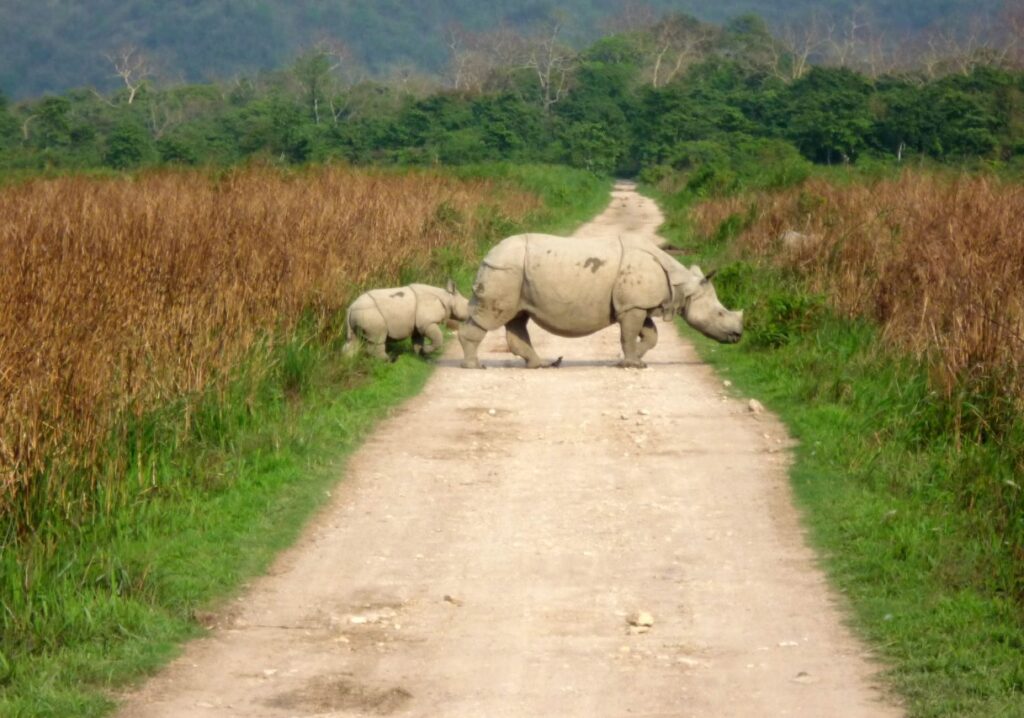
Kaziranga National Park is home to two-thirds of the world’s endangered Asian one-horned rhinoceros, and in 2006 this park is also declared a tiger reserve with the highest density of tigers in the world. Kaziranga National Park is considered one of the best wildlife sanctuaries in the world.
An impressive conservation achievement is the park’s contribution to saving the one-horned rhinoceros from the brink of extinction. Based on 2015 According to an animal census conducted by the park management, Kaziranga is home to more than 91 percent of Assam’s rhinos and 80 percent of Indian rhinos. The last rhino census counted 2,413 one-horned rhinos.
The park is also home to elephants, wild water buffalo and swamp deer. Kaziranga Rhino National Park is a UNESCO World Heritage Site in India that has been included in this list because of its unique natural environment.
In addition, the park has been recognized as an Important Bird Area by the Birdlife International Society as it hosts a wide variety of migratory and resident birds. It would be really disappointing not to see rare animals, whose population is very small, during a trip to India. Kaziranga National Park is open from November to the end of April.
4. Hampi
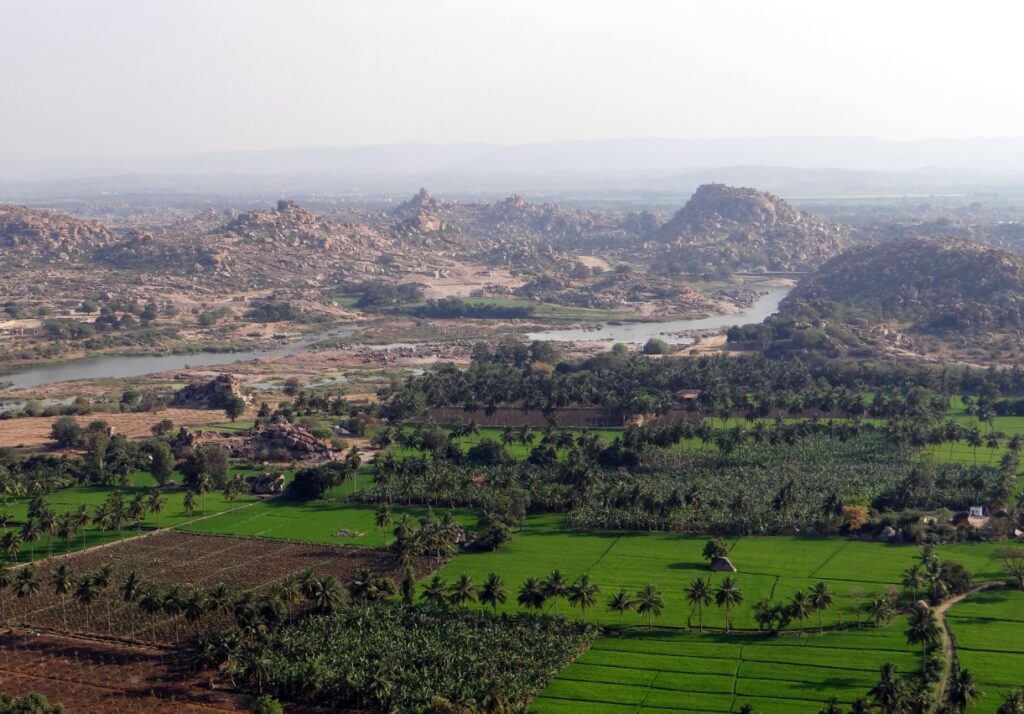
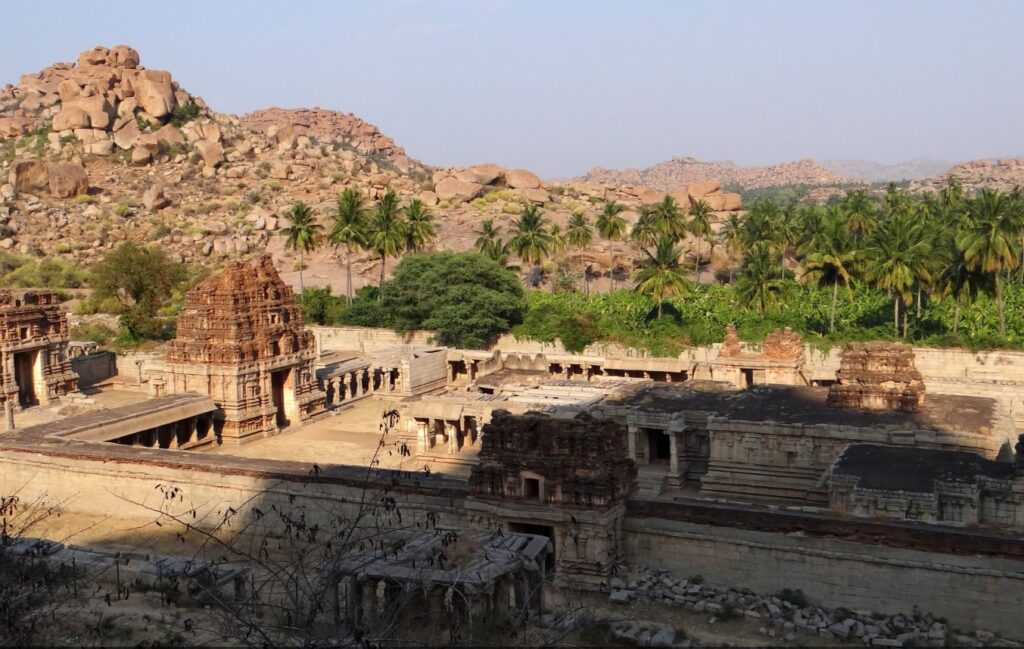
The city of Hampi is a legend located in the Karnataka region. It is the seat of the once most powerful and richest in the world at that time, the Vijayanagara Empire and an impressive cultural heritage in India. It’s a trip to the jungle – but a little different: made up of huge rock formations, oases and rice fields…
As soon as a foot is set on this mysterious land, the mind is filled with awe and curiosity. Why are the monuments in ruins? Why does the landscape resemble the canyons of Mars? Why do we see so many rocks and boulders scattered around? Hampi is one of those rare places on earth that has not been altered by volcanic or tectonic movements over the years. Many years – I mean tens of millions, even billions of years! The rocks of Hampi were formed by the erosion of giant monoliths that existed in prehistoric times.
It is also a unique UNESCO heritage site in India, a huge complex of Vijayanagara ruins, and in some villages the locals live in houses similar to the “Flintstones” houses located in caves. Here you will find the Virupaksha Temple, one of the oldest temples in India.
Being in Hampi now, you will not believe that it was the second largest city in the medieval world after Beijing. It was one of the largest international trade centers in the world in the 14th and 15th centuries.
Don’t forget to try a ride on a traditional round boat (coracle) made of flexible plant trunks. The New York Times ranked Hampi second among the top places to visit in 2019.
5. GIR – Lion National Park in Gujarat region and safari

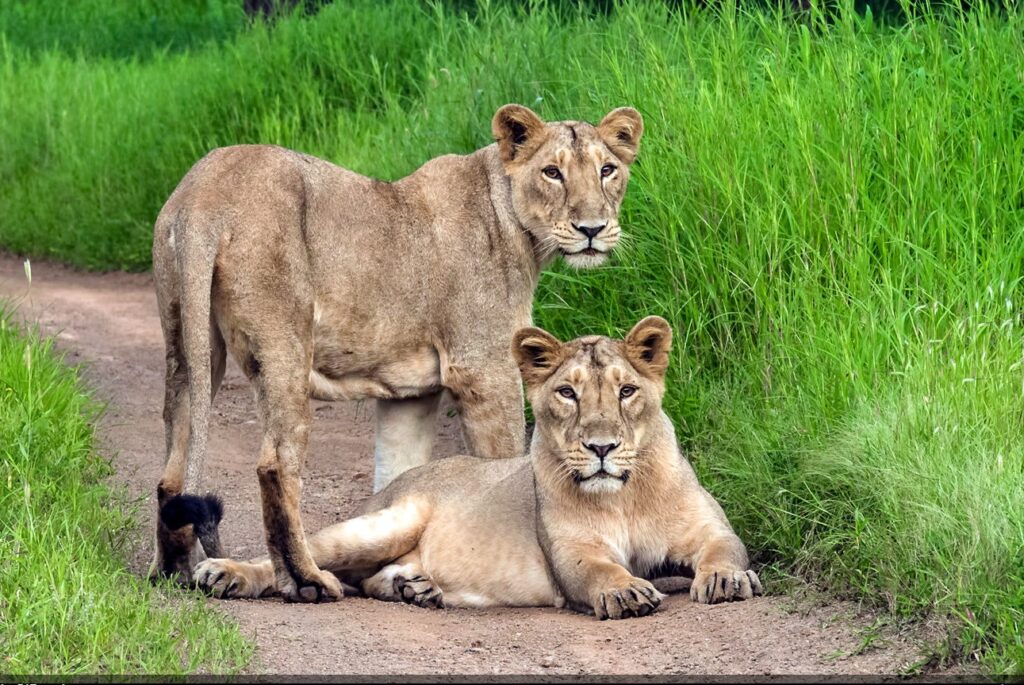
GIR National Park attracts visitors by presenting Asiatic lions in the wild (not in a zoo), the only place in the world that now hosts these regal animals. in 2000 they have been nearly hunted to extinction and declared critically endangered.
The number of Asiatic lions has rebounded thanks to conservation efforts. Based on the last 2015 census, the number of Asiatic lions in and around GIR since 2010 increased by 27 percent in 2018 March. The regional government of Gujarat has announced that a recent unofficial count puts the number of lions in the park at more than 600. The forested hilly terrain of GIR National Park is also attractive to jackals, leopards, antelopes, crocodiles and deer. It is also home to more than 300 species of birds.
Get into the jeep, arm yourself with patience and feel the adrenaline! A safari in India is a great opportunity for photography lovers to express themselves. The best time to see exotic animals is during the safari, early in the morning from December to May.
6. Nongriat village in the Meghalaya region of northeastern India


The Meghalaya region, otherwise known as the “Paradise Inn” or the “House among the Clouds“, is the wettest place in the world, so nature is here all year round. The region is distinctive for its distinctive food, culture, traditions and customs that are quite different from the rest of India. Christianity prevails in this community and caste does not exist.
Unlike the rest of India, the Meghalaya region is dominated by matriarchy. The matriarchal system is established in the following tribes: Khasi, Jaintia and Garo. Although the ownership rights remain with women, here the right of decision goes to men – brothers. But families always prefer to have a girl baby over a boy, and vice versa across the rest of India. Here, families have as many children as there are at least two girls.
In the village of Nongriat you will find amazing examples of bioengineering – living bridges of tree roots. A ficus tree (rubber tree – Ficus Elastica) grows roots in 10 years, and they mature into a bridge in a few hundred years. As you hike around the village of Nongriat, you will understand why the locals had a great need for this type of bridge in the past and present. Here, the settlements are simply located in narrow valleys, dense forests crossed by rivers. In the past, attempts were made to build bamboo bridges, but due to humidity and rains, such bridges quickly became moldy or were simply washed away during the rainy season. However, existing tree root bridges are resistant to these adversities and even get stronger with age!
In order for the bridge to be really strong and withstand a huge weight, you have to wait at least 50 years… Currently, there are even several living root bridges in Magalaya. The living wooden bridges are an example of highly sustainable architecture, and people from all over the world come to Nongriat village to see this masterpiece. A trip to India would be incomplete without seeing this living natural masterpiece.
The most impressive double-decker living root bridge is here in the village of Nongriat, in the vicinity of Cherra punji. You can walk and jump – the bridge can withstand several tons, and the locals carry everything on their shoulders that they can lift – furniture, logs and other necessary things. Cars simply don’t exist here!
The best time to travel is the dry period from October to June, when the bridges are not covered by the river.
7. Ellora and Ajanta Caves and Caves in the Maharashtra region


Ajanta Caves – 30 caves of extraordinary beauty, considered a UNESCO World Heritage Site in India, dating back to the 2nd century. Ellora and Ajanta Caves are the largest historical cultural heritage site in India, home to Buddhist monks and students. The caves were first discovered only in 1819, when John Smith, a British officer, while hunting a tiger, happened to see a horseshoe-shaped cave.
You will be simply mesmerized by Buddhist and Hindu works – structures and carvings. The architectural features and decorativeness are some of the finest works of art ever produced in the history of India. For example, sculptures and paintings that are valued for their unusual style and originality. Frescoes, which are used to decorate the surfaces of large walls. Many artists today have drawn inspiration from the artwork found in the Ajanta Caves.
The Ellora Caves are a masterpiece of art and also a UNESCO heritage site in India. The 34 caves carved into the monolithic Charanandri mountain and the Jain group of caves are among the largest carved cave complexes in the world. These masterpieces are decorated with statues of the Buddha and carved moments from his and Hindu lives. The most famous cave is considered to be the cave where the huge Buddha statue stands.
The structure, made of 200,000 tons of rock, took about five centuries to complete, a remarkable human achievement. It will take you two days to visit all the caves. The best time to visit is during the dry season, from October to April. During the summer months, the caves are flooded because they are deep in the ground.
8. Wayanad in the Kerala region

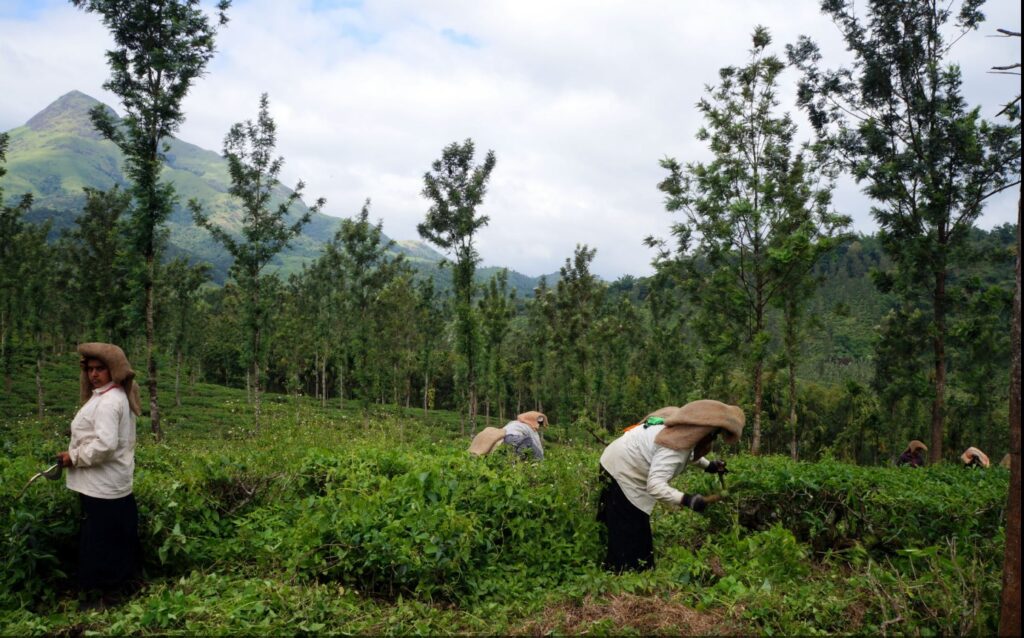
Wayanad, the ‘Green Paradise of India‘, is a picturesque plateau at an altitude of 700 to 2100 meters above sea level, located in the Western Ghats of Kerala. Apart from four waterfalls, historic caves, comfortable hotels in the jungle, the area around Wayanad is also famous for its spice plantations and wildlife.
Wayanad is best known for its wildlife sanctuaries, where elephants and leopards abound. It is ideal to see the surroundings through the eyes of a hiker, as there are many breathtaking places for nature lovers. Enjoy a trek to the top of Chembra which has a natural heart shaped lake Hridaya thadakam. Also see the Edakkal Caves, where you can admire 6,000-year-old engravings from Neolithic civilizations.
Wayanad is truly a great place for those who appreciate exotic nature, nature trekking, Ayurvedic treatments without the mass of tourists in India. The best time to travel is from October to May.
9. Great Rann of Kutch – Salt desert in the Gujarat region


Great Rann of Kutch – one of the largest white salt deserts in the world, formerly part of the Arabian Sea. Just like the Taj Mahal, the desert turns different colors at different times of the day. If you visit the desert during the Rann Utsav festival (starts in early November and lasts until the end of February), then you will see daily cultural performances of dance and music, handicrafts by local artists, and you can enjoy the pleasures of a spa in luxury tents in the salt desert.
But what to do in the salt desert? As in every desert, the main transport in this one is camels. Take a ride in camel-drawn carriages, try quad biking, motorized paragliding.
Considering the climate, the best time to travel there is winter, when the desert is completely dry and looks unique under the full moon, which illuminates the surface of the salt, making it smooth and shiny.
10. Odisha Region and Surviving Tribes


The Odisha region in northeastern India is a place that has preserved its traditional cultures and heritage. The region shares its land with 62 tribes that make up 24% of the total population of the region. These tribes serve as the soul of the state and are the ones that have not changed their culture and traditions until now. While the Kondh and Santal tribes are the most prevalent in the Odisha region, other tribes such as the Munda, Oram and Gond also play a significant role in the identity of the region.
These popular tribes survive mainly on agriculture, fishing, farming and hunting. However, as times changed, some were absorbed into mining and industry. Other prominent tribes such as the Koya, Mohali and Lohar specialize in areas such as cattle breeding, tool making and basket weaving. Tribes are distinguished by their clothing, facial features and customs.
What to do in Odisha region? The region is famous for its magnificent architectural temples like Jagannath, Sun, Lingaraja. Since there aren’t many tourists there, it’s a great way to see traditional tribes in their natural surroundings – in the villages, working in the fields and selling their goods in the markets.
The best time to travel is during the dry season from November to March.
India is a vast and diverse country that can offer destinations to suit every traveler’s taste. When traveling in India, it is simply easy to balance a sightseeing tour of the historical heritage with a relaxing trip in the mountains, islands or jungle, because everything is right next to each other.
10 New Places For Those Who are Looking For Unusual Travel Ideas in India by Delighted Journey

